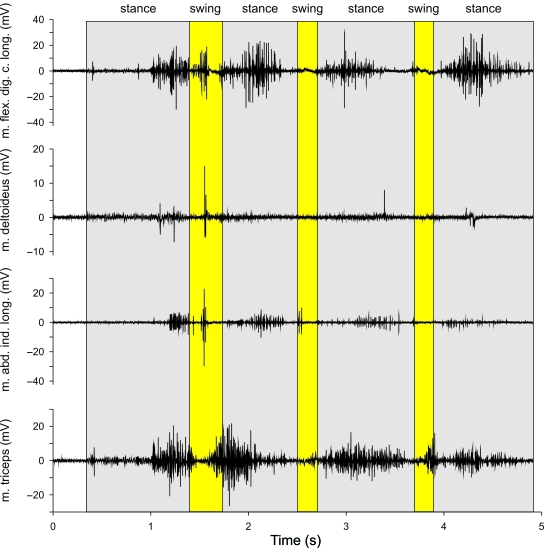Fig. 6.
Representative electromyographic traces of selected forelimb muscles in Litoria caerulea. Grey bars represent the ipsilateral contact phase; yellow bars represent the swing phase. Note how the flexor becomes active slightly after substrate contact, suggesting that the hand is first put down and subsequently flexed. Also note how the triceps (elbow extensor) is active during the contact phase but may also show activity during the swing phase as seen in the last step.

